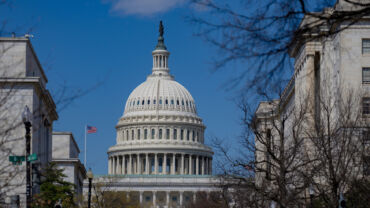State of New York v. U.S. Dept. of Labor, 2019 WL 1410370 (D. D.C. 2019)
Available at https://ecf.dcd.uscourts.gov/cgi-bin/show_public_doc?2018cv1747-79
A group of states sued the Department of Labor, asserting that the DOL’s final association health plan (AHP) regulations (see our Checkpoint article) impermissibly expand ERISA’s definition of “employer” by loosening existing requirements for close economic and representational ties among an association’s members for the association to qualify as an “employer,” making it easier for a group or association of employers to sponsor a single ERISA plan. Because such a single plan is likely to be a large plan, participating employers may avoid many requirements applicable to the individual and small group insurance markets under the Affordable Care Act (ACA), such as the essential health benefits requirement. The court acknowledged that it must defer to the DOL’s authority to interpret ERISA, but concluded that the DOL’s interpretation was not reasonable and failed to meet this deferential standard.
The court explained that, under ERISA, a group or association acting as an employer must be a “bona fide” group or association with business purposes and functions unrelated to the provision of benefits, commonality of interest among the participating employers, and control of the group’s activities by its members. According to the court, the regulations’ expansion of the business purpose element (to allow offering health insurance as the association’s primary purpose, so long as the association has an undefined “substantial business purpose” unrelated to provision of health care) provided no meaningful limit on the groups that would qualify. The court saw a similar problem with the commonality of interest element, which the regulations provide may be met solely based on geography (defined as an entire state, or a metropolitan area that might include multiple states). Citing as an example different types of businesses located in California cities, towns, and agricultural regions, the court noted that such disparate entities would likely lack the genuine commonality of interest required by ERISA. And, it pointed out, organizational control does not create an otherwise lacking commonality of interest. The court concluded that the expanded definition does not limit qualifying groups to those acting in the interest of employers and would allow profit-driven insurance ventures to be treated as ERISA employers, contravening long-standing ERISA interpretations.
The court also ruled that, although working owners may participate in an ERISA plan along with their employees (see our Checkpoint article), the expansion of the employer definition to include working owners with no employees conflicts with ERISA’s text and purpose. The court emphasized how the regulations could lead to absurd results—for example, 51 unrelated working owners, each with no employees, could band together in a “large” employer AHP exempt from the ACA’s individual and small group market requirements. Finding this untenable, the court set aside the regulations’ bona fide association and working owner provisions and sent the regulations back to the DOL to consider how its ruling would affect the remaining provisions.
EBIA Comment: For AHPs operating under the regulations, and their participating employers, this ruling could affect obligations under both ERISA and the ACA. And while some ERISA compliance responsibilities (such as Form 5500 filing) may be addressed relatively easily, the ACA issues (such as whether the employer is offering the required level of coverage) will likely prove more challenging. The DOL has issued a set of FAQs indicating that it is considering how to proceed, and reassuring AHP participants that they retain their rights to plan benefits. For more information, see EBIA’s ERISA Compliance manual at Section XIX.D (“Is There an ERISA Plan at the MEWA Level or at the Participating Employer Level?”). See also EBIA’s Health Care Reform manual at Section XIV.A (“Introduction and Understanding Small and Large Group Markets”), EBIA’s HIPAA Portability, Privacy & Security manual at Section XVIII.D (“Special Rules for Association Plans”), and EBIA’s Self-Insured Health Plans manual at Section III.D (“Who Can Sponsor a Self-Insured Health Plan?”).
Contributing Editors: EBIA Staff.








